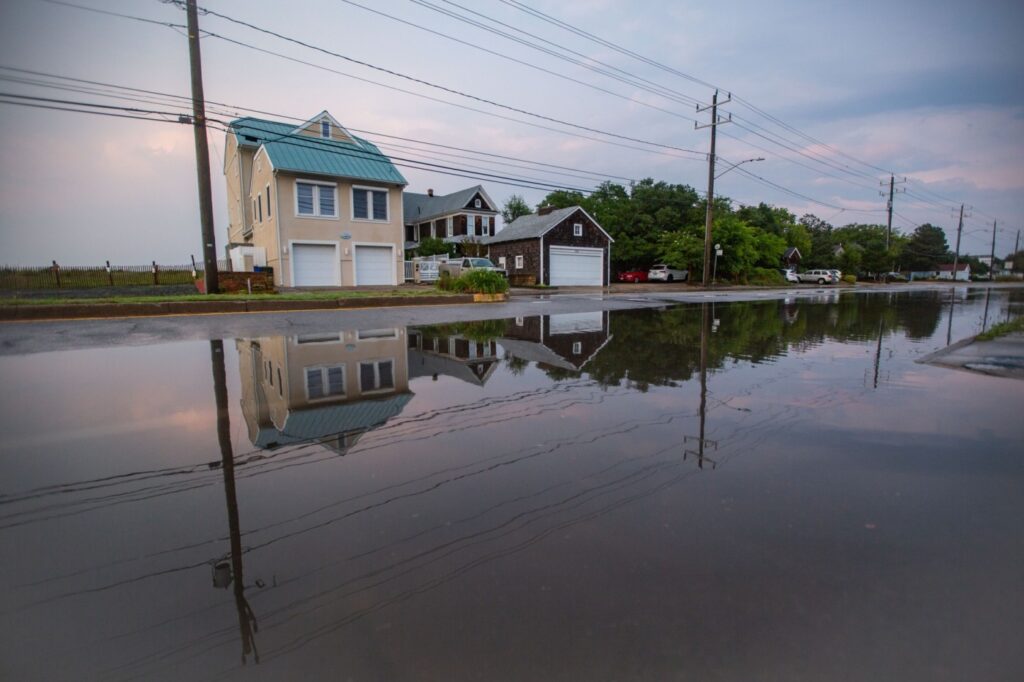
A new study released last week shows that some “100-year flood” estimates may not reflect a changing climate.
First Street Foundation, a research and technology nonprofit that studies and collects data on climate risks, released its eighth National Risk Assessment: “The Precipitation Problem.”
Many climate and weather groups gauge extreme rain events as a “100-year flood” or a “1-in-100-year-flood.” Also known as a “100-year recurrence interval,” this means that a flood of that magnitude has a 1% chance of happening in any year.
According to the new study, roughly 21% of the country can now expect their “1-in-100 year flood” to happen every 25 years. In the most extreme cases, over 20 counties are expected to experience the current “1-in-100 year flood” severe event at least once every 8-10 years.
The study says many Americans, more than half, live in an area that is twice as likely to experience such a rain event than is predicted by Atlas 14 — is a peer-reviewed record of precipitation frequency estimates for the United States produced by the National Weather Service. Every few years, the program gets updated, and the Atlas 15 is expected to be complete by 2027.
“Atlases were developed based on the temporal stationarity of precipitation, which assumes that the occurrence probability of extreme precipitations is not expected to change over time,” a portion of the study reads. “However, climate change has altered the intensity and frequency of extreme precipitation over time, and most climate models project that the features of extreme precipitation will continue to grow throughout the 21st century.”
Data from the study will be integrated into Risk Factor’s platform by the end of the month. Risk Factor’s data tools allow users to search for their home or ZIP code to view environmental changes and risks of major natural events, such as floods or fire. For example, if a 100-year flood occurred today in Norfolk’s 23507 ZIP code, it could affect 669 properties. This type of event has a 26% chance of occurring at least once over the life of a 30-year mortgage. About 30 years from now, an event of this same likelihood would affect 1,178 properties, due to a changing environment. According to the study, the change in return period for Hampton Roads is closer to 1 in 20 years.
“The magnitude of the changes in expected rainfall intensity are startling for many areas in the United States, and it is important that Americans are fully aware of this consequence of climate change that can impact their lives and homes,” Jungho Kim, First Street Foundation’s senior hydrologist and lead author of the peer-reviewed study, said in a statement.
Researchers said that because a lot of federal funding programs use Atlas 14 data to distribute money, there could be issues with getting the most accurate assessments on damage costs. According to Atlas 14, a 100-year flood in Norfolk would be a rain event during which 9.2 inches fall within a 24-hour period.
“The fact that the nation will not have the most accurate estimates of extreme precipitation likelihoods available at the time of the design of (Infrastructure Investment and Jobs Act) projects means that many of them will be out of date on the day they are opened to the public,” Matthew Eby, founder and executive director of First Street Foundation, said.
Eliza Noe, [email protected]
